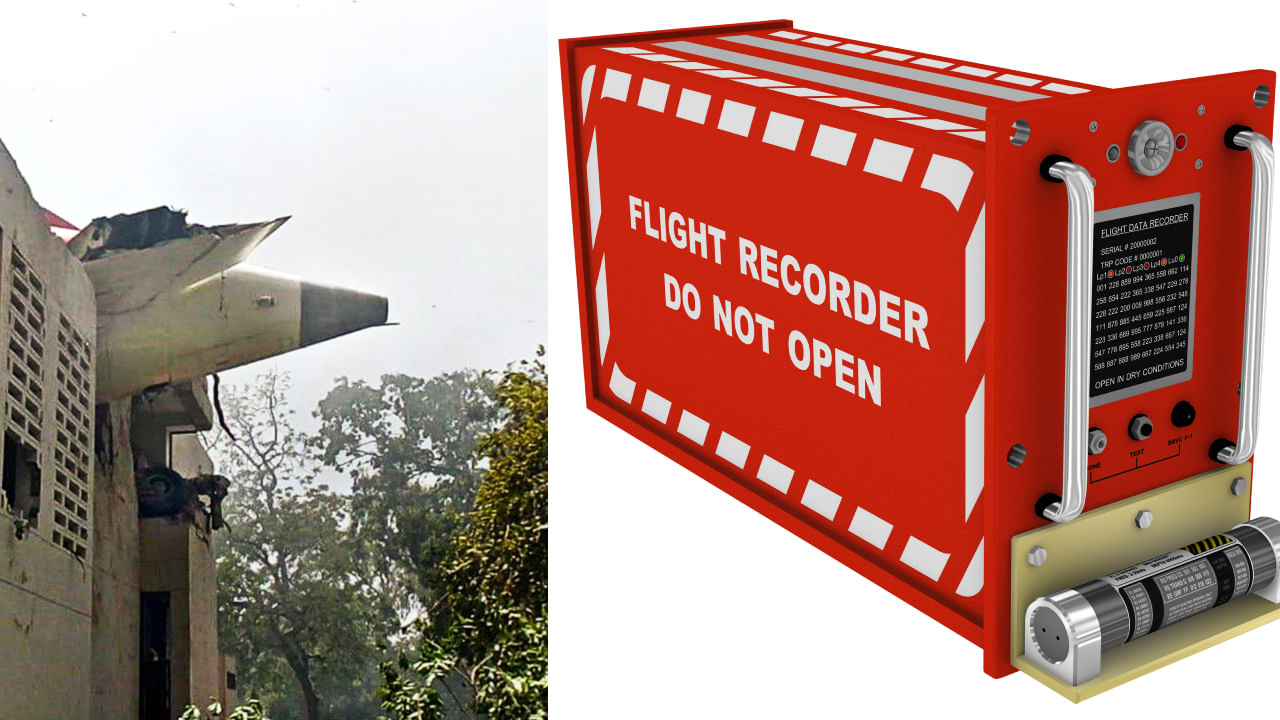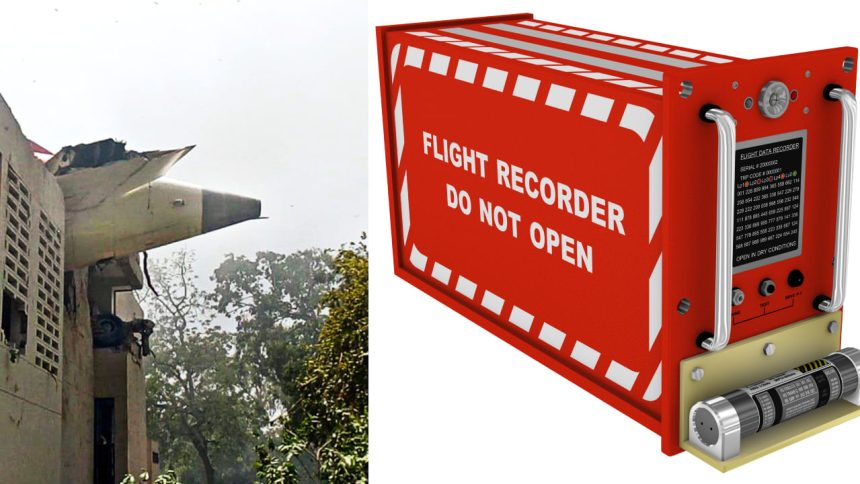
New Delhi: An Air India flight carrying 242 people, including passengers and crew, crashed into a densely populated residential area just minutes after departing from Ahmedabad airport on Thursday, June 12, 2025. The incident has raised concerns about potential significant casualties.
According to officials at Ahmedabad’s Air Traffic Control, the pilot of the Boeing 787 Dreamliner had issued a distress ‘Mayday’ call shortly after takeoff, indicating a critical emergency. Footage captured by a resident shows the aircraft rapidly descending before erupting into flames upon impact. The fiery crash sent thick black smoke billowing into the sky, leaving the neighbourhood in shock.
As rescue teams are on the accident site, investigators are promising to look at the recovery black box of the Air India Boeing 787-8 Dreamliner. A Black Box is the key to understanding what exactly caused the aviation accident.

Infographic credit: Mehmet Yaren Bozgun/Anadolu via Getty Images
Why black box is important?
The Ahmedabad crash investigation will utilise the black box to determine whether mechanical failure, engine issues, a bird strike, an onboard fire, or human error caused the disaster. It will provide critical information about the crew’s “MAYDAY” call, any automated warnings, and recovery attempts post-takeoff. The Flight Data Recorder will detail engine performance and control positions, while the Cockpit Voice Recorder may capture emergency checklists and crew discussions. Once recovered, these devices will be sent to forensic labs under the DGCA or the Aircraft Accident Investigation Bureau for analysis, a process that may take several days to weeks. However, initial assessments are available within 24 hours to help guide the investigation.
What is a black box or a flight recorder?
A flight recorder, commonly known as a “black box,” is an electronic device placed in an aircraft to aid in investigating aviation accidents. These devices are painted bright orange for easy recovery. There are two types: the flight data recorder (FDR), which records flight parameters, and the cockpit voice recorder (CVR), which captures cockpit sounds and conversations. Both may be combined into one unit and are required to survive severe accident conditions, withstanding impacts of 3,400 g and temperatures exceeding 1,000 °C (1,830 °F), as per international regulations. Flight recorders have been mandatory in U.S. commercial aircraft since 1967. Following the disappearance of Malaysia Airlines Flight 370 in 2014, there have been calls for improved data streaming and enhanced locator beacon battery life.
What are its components?
Flight Data Recorder (FDR)
A flight data recorder (FDR), also known as an accident data recorder (ADR), is an electronic device that records instructions sent to an aircraft’s electronic systems. FDRs are crucial for investigating accidents and are designed to withstand high-impact forces and intense heat. They are often bright orange for visibility and are typically located in the tail section of the aircraft.
Modern FDRs receive data from flight-data acquisition units, recording significant parameters such as control positions and engine information. Current US regulations require a minimum of 88 parameters to be recorded, with each usually logged a few times per second, although some data can be captured more frequently during changes. FDRs generally store about 17–25 hours of data in a continuous loop and must undergo annual verification checks.
These recorders are encased in corrosion-resistant steel or titanium and come with an underwater locator beacon that emits an ultrasonic signal for up to 30 days, facilitating recovery when submerged.
Cockpit Voice Recorder (CVR)
A cockpit voice recorder (CVR) is a flight recorder that captures audio from the aircraft’s flight deck to assist in accident investigations. It records signals from pilots’ headsets and an area microphone in the cockpit. The FAA requires a minimum recording duration of two hours, which the European Aviation Safety Agency expanded to 25 hours in 2021. In 2023, the FAA proposed extending this requirement to investigations involving runway incursions.
Standard CVRs can record four audio channels for up to two hours, whereas the original specification only called for 30 minutes, which was found to be inadequate. The earliest CVRs used analogue tape, while modern designs utilise solid-state memory for improved durability against shock and moisture and include a battery for continued recording even if the aircraft’s electrical system fails. CVRs are typically installed in the rear of the fuselage to enhance their chances of survival in a crash.
Combined units
Digital recorders have enabled the combination of the FDR and CVR into a single, fireproof, shockproof, and waterproof unit known as the Cockpit Voice and Data Recorder (CVDR). Notable manufacturers include L3Harris Technologies and Hensoldt. Solid-state recorders became commercially viable in 1990, eliminating the need for scheduled maintenance and simplifying data retrieval. Two-hour voice recording capabilities were added in 1995.
Additional equipment
Since the 1970s, large civil jet transports have often included a “quick access recorder” (QAR), which records data on removable storage that can be easily accessed via a standard desktop computer. Unlike the more difficult-to-access Flight Data Recorder (FDR) and Cockpit Voice Recorder (CVR), QARs allow airlines to scan for significant deviations from normal operations to identify and resolve potential issues before they lead to accidents.
A flight-data acquisition unit (FDAU) collects various sensor data and routes it to the FDR and QAR. Modern aircraft systems are typically digital and often incorporate built-in test equipment that records operational information, aiding in accident investigations.
Black Box Specifications
The design of modern Flight Data Recorders (FDRs) is based on internationally recognised standards in ICAO Annexe 6 and industry specifications, such as EUROCAE ED-112. The FAA also regulates FDR design in the U.S., citing these standards.
EUROCAE requires that recorders withstand 3400 g of acceleration for 6.5 milliseconds, equivalent to an impact of 270 knots. Additionally, they must meet requirements for penetration, static crush, temperature extremes, and immersion.
EUROCAE ED-112, issued in March 2003, sets the specifications for flight data and cockpit audio recording for accident investigations, replacing previous specifications. To aid recovery, recorders are brightly coloured and marked with “Flight recorder do not open” and include an underwater locator beacon that activates upon an accident.










